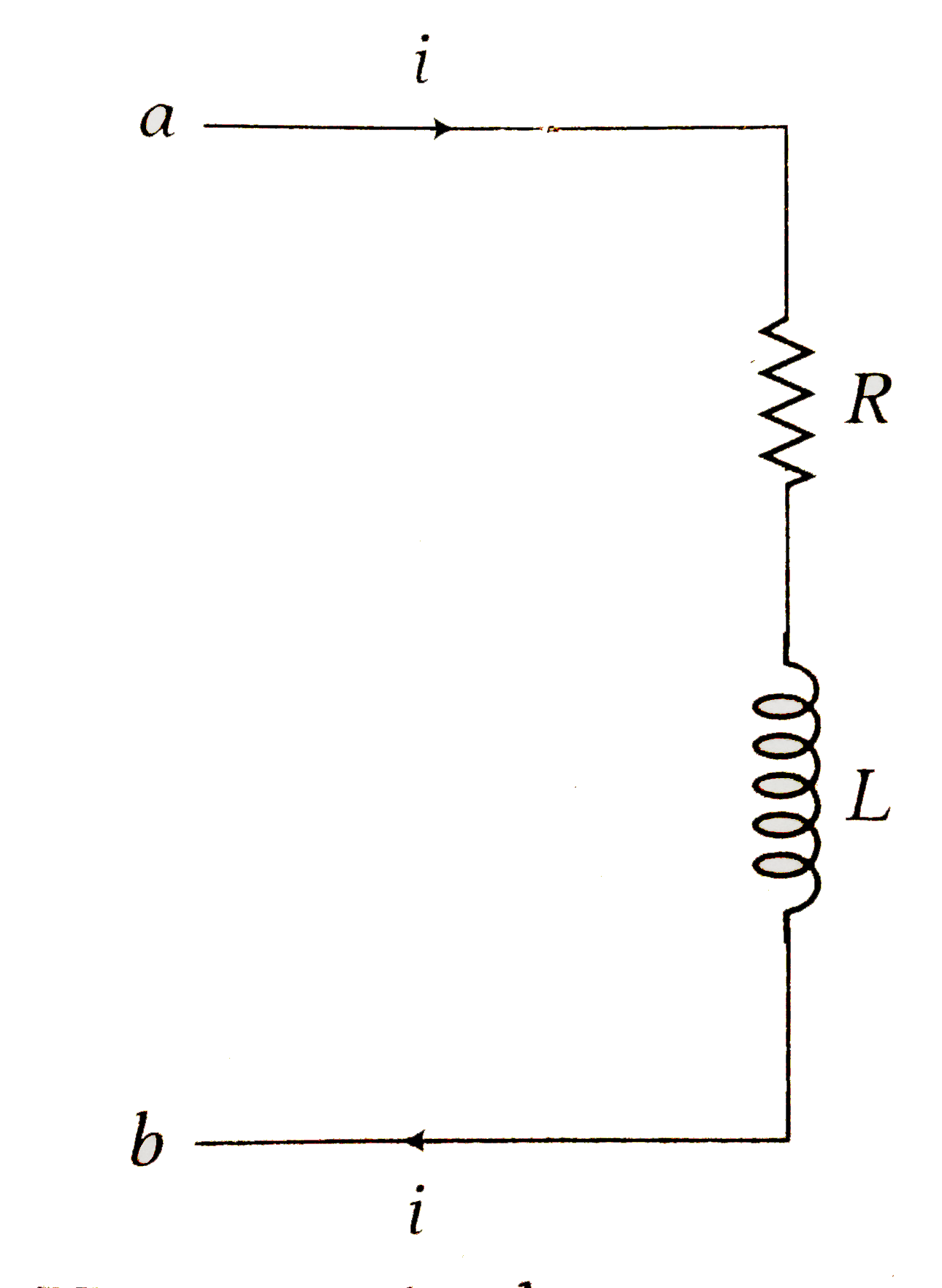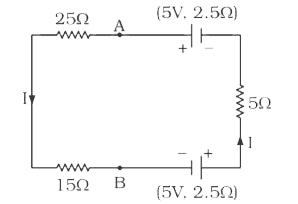If the instantaneous change on the capacitor is 100μC and current through the circuit is decreasing at the rate of 2×103 As then potential difference VA−VB is equal to _PHY_E06_046_Q01.png)
−3V
3V
37V
7V
Step by step video & image solution for If the instantaneous change on the capacitor is 100muC and current through the circuit is decreasing at the rate of 2×10^3 A/s then potential difference V_A-V_B is equal to by Physics experts to help you in doubts & scoring excellent marks in Class 12 exams.
Updated on:21/07/2023Topper's Solved these Questions
Similar Questions
Knowledge Check
When the current in a certain inductor coil is 5.0A and is increasing at the rate of 10.0A/s,the magnitude of potential difference across the coil is 140V.When the current is 5.0A and decreasing at the rate of 10.0A/s,the potential difference is 60V.The self inductance of the coil is :
A2HB4HC10HD12HWhen the current in the portion of the circuit shown in the figure is 2A and increasing at the rate of 1A/s,the measured potential difference Va−Vb=8V.However when the current is 2A and decreasing at the rate of 1A/s, the measured potential difference Va−Vb=4V.The values of R and L are:
 A3ohm and 2 Henry respectivelyB2ohm and 3 Henry respectivelyC10ohm and 6 Henry respectivelyD6ohm and 1 Henry respectively
A3ohm and 2 Henry respectivelyB2ohm and 3 Henry respectivelyC10ohm and 6 Henry respectivelyD6ohm and 1 Henry respectivelyWhen the current in the portion of the circuit shown in the figure is 2 A and increasing at the rate of 1As−1, then the measured potential difference Vab=8V.
However, when the current is 2 A and decreasing at the rate of 1As−1, then the measured potential difference Vab=4V.
The values of R and L are
 A3Ω and 2 H respectivelyB3Ω and 3 H respectivelyC2Ω and 1 H respectivelyD3Ω and 1 H respectively
A3Ω and 2 H respectivelyB3Ω and 3 H respectivelyC2Ω and 1 H respectivelyD3Ω and 1 H respectively
A section of an electrical circuit XY is shown in figure-5.100 which carries a current of 5A which is decreasing at the rate of 10A/s. Find the potential difference Vy−Vx'

View SolutionIn the circuit shown in the figure , no current flows through the 8 Ω resistor, then the potential difference between points A and B(VA−VB)is
_PHY_E01_001_Q01.png)
View SolutionIn the circuit shown, the potential difference between A and B VAandVB is equal to_______V.

View SolutionA part of a complete circuit is shown in the figure . At some instant the value of current I is 1 A and it is decreasing at a rate of 102As−1 . The value of the potential difference VP−VQ, (in volts) at that instant , is ____________.

View Solution
In the above circuit diagram emf of two batteries are equal , then the potential difference VA–VB between terminals A and B will be
View Solution

_PHY_E06_148_Q01.png)
